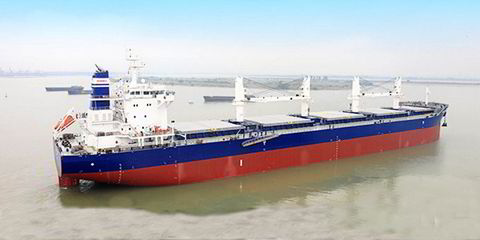Argentina’s new project to load crude on to VLCCs and suezmaxes makes the country worth watching in terms of demand, UK shipbroker Gibsons believes.
Explosive growth in Americas crude production has repeatedly focused on prospects in the US, Guyana, Brazil and Canada.
Argentina has failed to attract as much international attention. However, that may be changing, the London shop argues.
Drilling activity in the country’s primary shale region, Vaca Muerta in Patagonia, resumed in 2021 after a brief pause in 2020 and there have been steady increases in exploration activity since then.
Domestic production is forecast to reach 780,000 barrels per day (bpd) this year, up from around 500,000 bpd prior to the pandemic, Gibsons said.
Further gains are expected, with 1m bpd in sight by 2028.
As capacity expands, most of the incremental barrels are likely to be shipped out.
Most crude now is loaded on to panamaxes in Puerto Rosales or onto suezmaxes at Caleta Cordova.
However, state-owned oil company YPF is in the early stages of a $1.2bn project, Vaca Muerta Sur, to export up to 380,000 bpd on VLCCs and suezmaxes from the Atlantic coast.
YPF chief executive Pablo Iuliano said in April that Vaca Muerta Sur involves a pipeline and port facilities.
This will “dramatically cut the costs of logistics and transport”, he added.
‘One to watch’
Gibsons said: “The project is still in its infancy and could be altered or delayed; yet, it is certainly one to watch.”
The reopened 110,000-bpd Trans-Andean pipeline from Chile to the Atlantic also offers an export route for Argentinian production to the Bio Bio refinery at San Vicente in Chile.
This opens up the possibility of exporting crude on aframaxes and suezmaxes, the company added.
But the broker said volumes will be constrained by demand from Chilean state-owned oil company ENAP.
“Ultimately, whilst Argentina is unlikely to become a leading crude exporter any time soon, production is growing, whilst refining capacity and domestic demand is not, increasing the availability of crude available for export,” Gibsons added.
“If YPF is able to successfully develop its new export project on the Atlantic Coast, then VLCCs and suezmaxes will find a new source of demand; otherwise much of the exports will be constrained to an ageing panamax fleet.”





